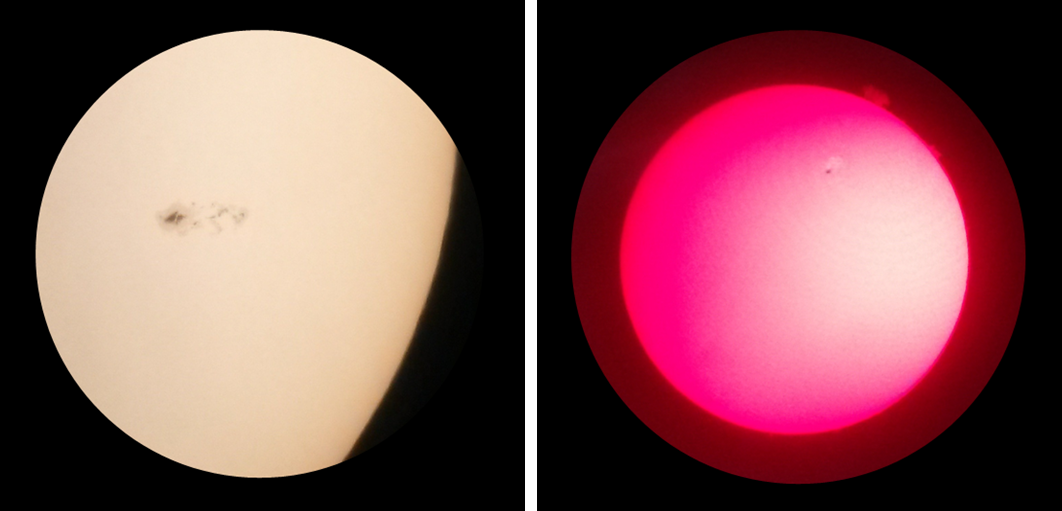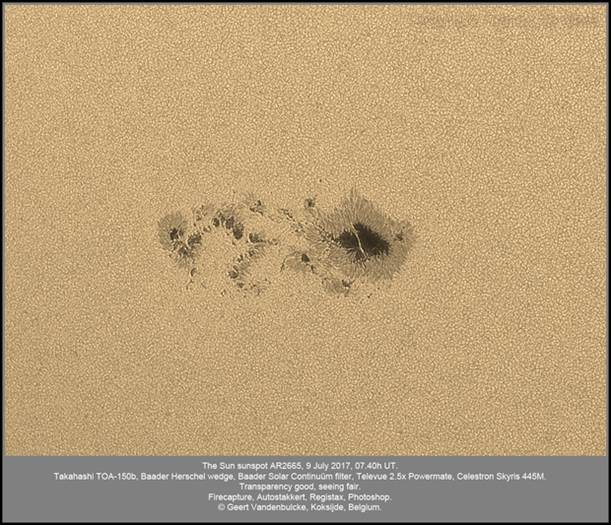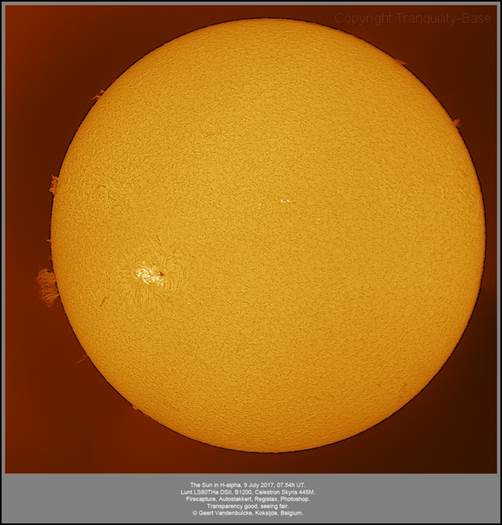What does a solar observer do on a quiet and sunny Sunday morning? Observing the Sun of course, in particular if one of the largest sunspot groups of the year (so far) is transiting the solar disk. According to the NOAA data, active region NOAA 2665 had a surface area of more than 4 times that of the Earth, and it was long enough (front-to-end) to fit 10 Earth's next to each other! The sunspot region was relatively compact, and was reported a naked eye object (using solar eclipse glasses of course: keep it safe!). The Mount Wilson Observatory measured the magnetic field strength in the main spot to be more than 3500 times the intensity of the Earth's magnetic field. The region had produced several C-class flares during the early hours of 9 July, as well as 1 M-class ("medium") flare that peaked at 03:18UT.

The image above to the left shows NOAA 2665 in white light at 06:46UT and was taken by the author through a modest sized telescope and a handheld smartphone, which explains the somewhat blurred appearance of the group. The eastern solar limb is on the right. The complexity of the region and the large size of its main spot are obvious, with a light bridge splitting the umbra (dark "core") of the main spot. Pending the size of the telescope and the timing of observation, observers counted between 15 and 30 sunspots in the region. The image to the right shows a full disk solar image in H-alpha, a spectral line in the red part of the solar spectrum revealing the Sun's lower atmosphere at a temperatures of about 10.000 degrees. The dark spot in the upper right quadrant is the main spot of NOAA 2665, with the brighter trailing region indicative of where a modest C-class flare had occurred just a few minutes earlier. H-alpha is indeed often used by ground-based observatories to catch a solar flare. The red expulsions at the upper right solar limb are modest-sized prominences, areas of charged particles squeezed between magnetic fields of opposite polarity.

Some solar observers have accumulated many years of experience in astrophotography and image processing, and have a professional telescopic set-up and camera's. As such, they are able to make jaw-dropping, high-resolution, picture-perfect solar images. Geert Vandenbulcke is such a Belgian "amateur" solar observer of international fame. Taken at about the same time (between 07:00 and 08:00UT on 9 July), the image above shows NOAA 2665 in white light, and a full disk Sun in H-alpha can be seen in the image below. The amount of detail is already astonishing in these images, but visiting Geert's website and taking a look at the full-sized images makes one really appreciate the visible details in the active region and in the Sun's atmosphere in all their grandeur!






